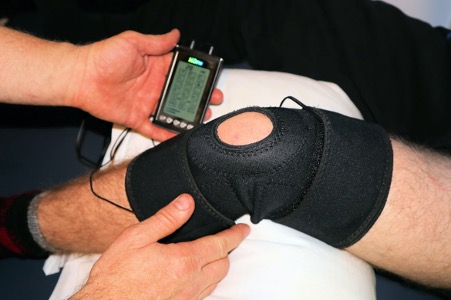
Knee injuries can be some of the most debilitating and painful injuries that you could experience. Whether it’s a sports-related injury or something more serious like an accident, dealing with a knee injury can be overwhelming and frustrating.
The good news is that there are ways to manage your pain and recover from your knee injury in order to get back on your feet as quickly as possible. In this article, we will discuss different techniques for managing knee pain while recovering from an injury, including rest, exercise, physical therapy, medications, and other treatments. We will also provide tips on how to prevent future injuries so that you can stay active without worrying about reinjury.
Seek Medical Attention
The first step you should take when dealing with knee pain is to consult your doctor or health care provider. They can provide a proper diagnosis and determine the best course of action for treating your injury. Depending on the severity of the injury, they may recommend rest, physical therapy, medications, or even total knee replacement surgery. If your doctor suspects a more serious condition, they may order additional tests such as an MRI or XRAY to properly diagnose the root cause of your pain. When in doubt, always consult a professional and follow their advice. They may also refer you to a physical therapist or orthopedic specialist for more specialized care.
Rest and Ice
One of the most important steps in recovering from a knee injury is giving yourself time to rest and heal. Avoid activities that cause pain or discomfort, and instead focus on low-impact exercises such as swimming, biking, and stretching. Additionally, try using ice or cold compression to reduce swelling and inflammation. Applying an ice pack, bag of frozen vegetables, or even a cool damp cloth can be used to help reduce the swelling around your knee. It is important to remember that if you start to experience numbness or burning with the ice application, discontinue immediately. If you are not able to get relief through rest and ice, it may be time to seek medical attention. When in doubt, consult with your doctor.
Physical Therapy
Depending on the severity of your injury, physical therapy may also be recommended. A physical therapist can provide you with exercises specifically designed for you to strengthen and rehabilitate your injured knee. They will also work with you to improve your range of motion, flexibility, and balance. Additionally, physical therapists can help you modify any activities that may be exerting stress on your knee. If needed, they may provide treatments such as electrical stimulation and ultrasound to reduce inflammation or pain and accelerate healing. Physical therapy can also aid in improving coordination, strength, and endurance while supporting the healing process. It is important to note that physical therapy treatments will vary depending on the type and severity of your injury. Therefore, it is best to consult a medical professional or certified physical therapist to determine the best course of action for you. It is also important to be consistent with physical therapy and do the recommended exercises regularly to achieve the best possible results.
Massage Therapy
In addition to physical therapy, massage therapy may help relieve pain and inflammation in your injured knee. Massage can improve circulation and reduce stress on joints, muscles, and ligaments in the affected area. It can also help improve flexibility and range of motion.
To get the most out of massage therapy for your knee, it is important to find a qualified therapist who has experience with treating injuries like yours. Make sure you communicate your specific needs and expectations to your therapist beforehand so they can tailor their techniques accordingly.
Some common massage techniques used to help with knee injuries include Swedish massage, deep tissue massage, and reflexology. Your therapist may also use heat or cold therapies in combination with their techniques to reduce inflammation and improve mobility. Your therapist may suggest additional lifestyle changes such as exercise, diet modifications, and stress management strategies to further aid your recovery.

In conclusion, if you have sustained an injury to your knee, there are a variety of treatments available. Rest and ice are important for reducing pain and inflammation, while physical therapy can help improve range of motion, strength, and coordination. Massage therapy is another option that may help to reduce discomfort and encourage healing. For more severe injuries, doctors may suggest surgery. If you think you may need to seek medical attention, be sure to consult a doctor or other healthcare professional immediately. Remember that it is important to take a proactive approach and do all that you can to support your recovery process.



